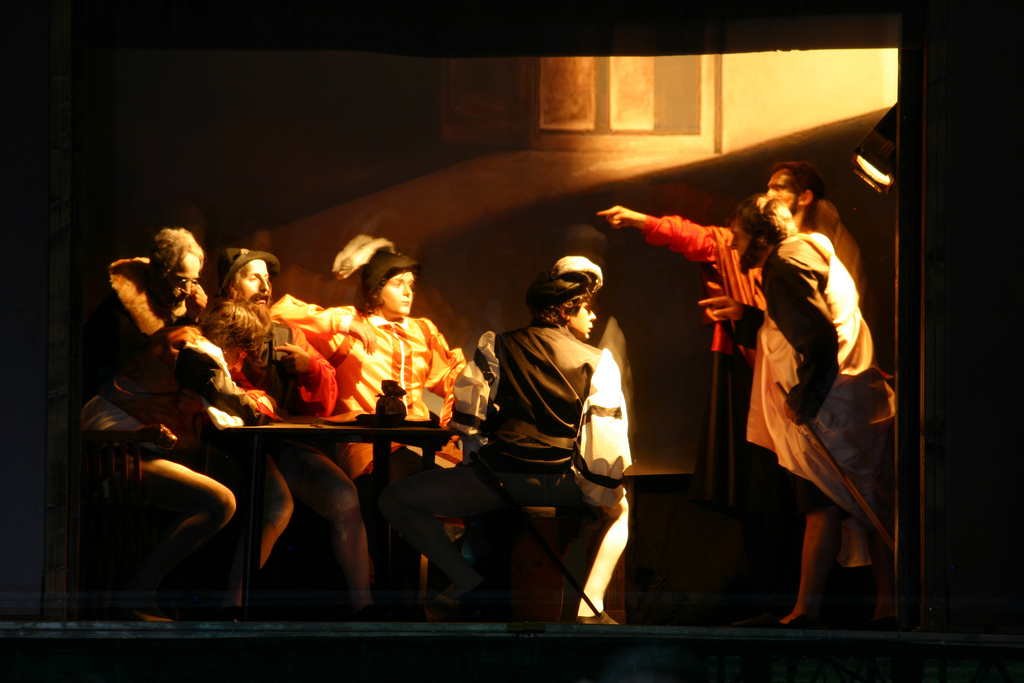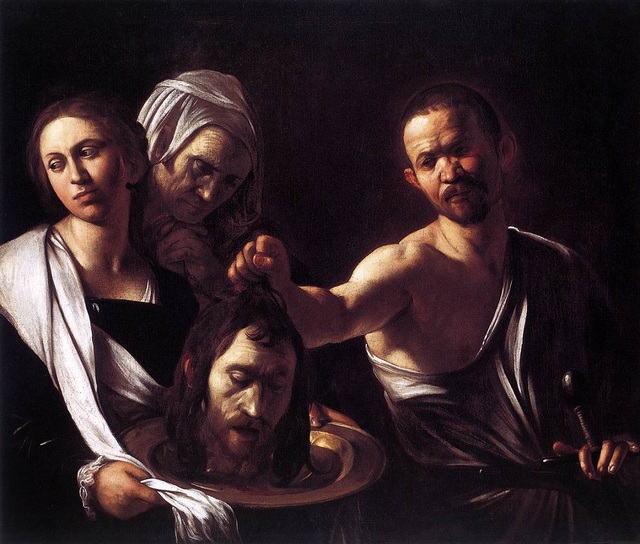Italy’s Amazing Living Works Of Art Posted by Geoff on May 16, 2016 in Culture
I recently came across a video excerpt from the popular TV show ‘Italy’s Got Talent’ on youtube. Here was something truly beautiful and astonishing that I’d never seen before: the Quadri Plastici di Avigliano. Fascinated, I decided to find out more …
Plastic ‘Paintings’
Every year in Avigliano, a small town in the province of Potenza, Basilicata, a unique and extraordinary show takes place: la Sacra Rappresentazione dei Quadri Plastici. A quadro plastico, also known as a quadro vivente, is a living work of art which represents either a historical, sacred or mythological scene, or a masterpiece of figurative art using immobile actors and actresses.
Etymological note: The word plastico (plastic) is derived from the Greek plastikos meaning “capable of being shaped or moulded”.
Origins
The official website of the Pro Loco di Avigliano gives us a bit of historical background:
Le prime notizie certe sulla rappresentazione dei quadri plastici si hanno ad Avigliano a partire dagli anni ‘20. Nella serata della vigilia delle più importanti festività aveva luogo la processione della “nave”, una costruzione con l’ossatura in legno, rivestita di carta colorata, con al centro la statuetta del Santo.
The first certain news of the representation of quadri plastici in Avigliano dates back to the 20’s. During the evening preceding the most important festivals the procession of the ‘nave’ took place. The ‘nave’ was a structure made from a wooden ‘skeleton’ covered in coloured paper, with a statue of the Saint in the middle.
La “nave” veniva portata a spalla e preceduta da uomini travestiti da turchi e da bambini che reggevano lampioncini veneziani. La nave era seguita da carri trainati da cavalli e muli sui quali venivano allestiti dei “quadri”, detti plastici, perché riproducevano soggetti di arte sacra e storica, interpretati da giovani, che ad ogni sosta dei carri assumevano quella rigidità statutaria che conferiva la tridimensionalità dell’opera d’arte rappresentata.
The ‘nave’ was carried by shoulder, and preceded by men dressed as Turks and children carrying paper lanterns. It was followed by carts pulled by horses and mules, upon which were staged “tableau”, known as plastici, because they reproduced subjects from sacred and historical art. These were interpreted by youths who, at every stopping off point of the carts, assumed a statue like rigidity that gave a three dimensionality to the artwork being reproduced.
Nella versione più moderna i quadri plastici venivano invece realizzati su palchi fissi e con la maggiore aderenza anche scenografica del soggetto riprodotto.
In the more modern version, the quadri plastici were created on fixed stages with a closer scenographic resemblance to the subject being reproduced.
Dal Vivo (Live)
But to really appreciate the beauty of these tableaux you need to see them dal vivo (live), or the next best thing, on video. Here’s one of the most interesting videos that I’ve found on the subject.
In the next video a group of quadri viventi reproducing works by Caravaggio are presented on the TV show Italy’s Got Talent.
Alla prossima, ciao ciao!

Build vocabulary, practice pronunciation, and more with Transparent Language Online. Available anytime, anywhere, on any device.








Comments:
Melissa:
The city of Laguna Beach, California, has been creating their Pageant of the Masters every summer since 1933.
Click on the link to read more:
https://www.foapom.com/pageant-of-the-masters/
Geoff:
@Melissa Thanks for sharing that Melissa, it looks great.
I’m waiting for someone to do Picasso’s Guernica … now that will be impressive! 😉
Saluti da Geoff
Ada Saperstein:
Most interesting and thank you ! I love Caravaggio and it is truly amazing what these people are doing, especially with the light ! ! !
What a great thing to be doing, instead of all the stupid activity on Facebook and Twitter, etc. Although, some people are using them to put beautiful pieces of art on their pages every week. Now, THAT IS interesting !
Ada
Geoff:
@Ada Saperstein You’re welcome Ada. Actually, it was through a friend’s facebook that I discovered the quadri plastici!
If you love art you might enjoy this article: https://blogs.transparent.com/italian/italys-incredible-transparent-church/
Saluti da Geoff 🙂
Bettina Jetter:
Amazing! Thanks for sharing this beautiful work of art with us.
Geoff:
@Bettina Jetter Sei la benvenuta Bettina. A presto, Geoff 🙂